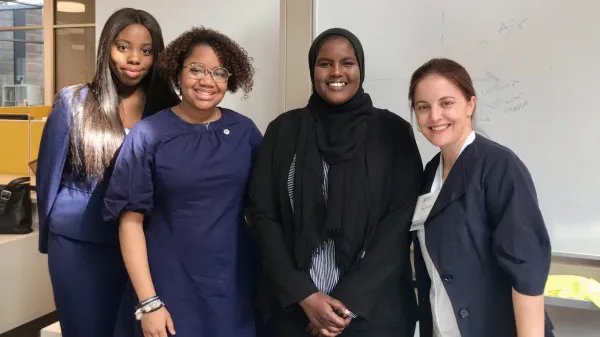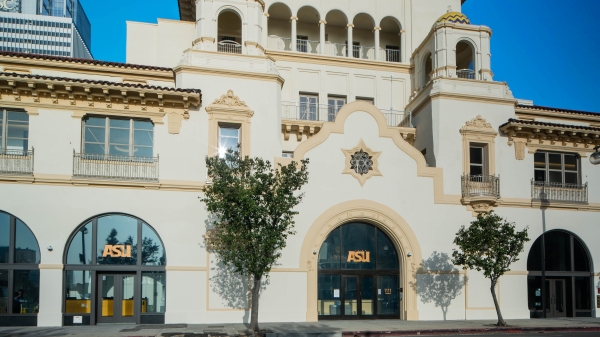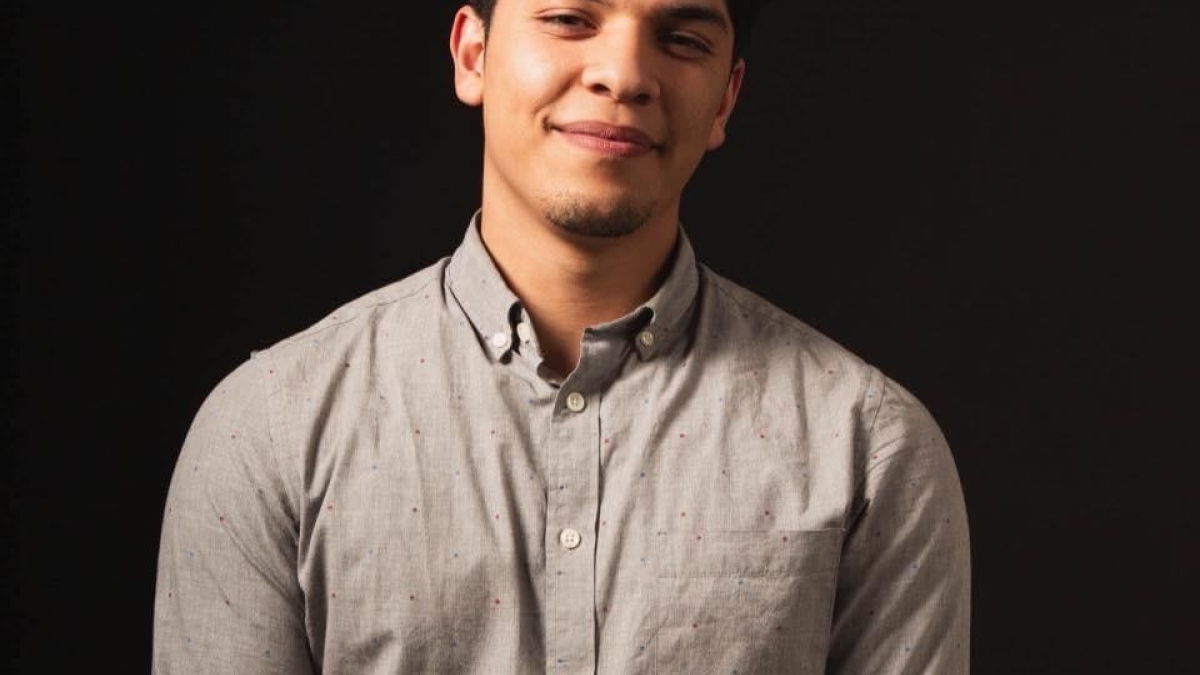Editor's note: This story is part of a series of profiles of notable spring 2020 graduates.
In February 2020, Joel Farias and a team of fellow students at Arizona State University’s Howard Center for Investigative Journalism gained national recognition when their story investigating a federal law enforcement shooting ran in the Washington Post and the New York Times, and was picked up by the Associated Press.
Farias, who is graduating with a bachelor’s degree in journalism with a concentration in broadcast journalism from the Walter Cronkite School of Journalism and Mass Communication, spent months on an accompanying documentary examining the shooting, which occurred when U.S. Immigration and Customs Enforcement’s Homeland Security Investigations agents attempted to arrest a suspect in Phoenix.
The documentary, which showed how the shooting escaped scrutiny by local law enforcement, aired on PBS Horizon and Cronkite News, and gave Farias the opportunity to work with an editor from the Associated Press and a video producer for PBS Frontline.
“I learned that the most important form of journalism is investigative reporting. It requires the most accuracy and attention to detail,” Farias said. “I think it’s the most impactful and has the most value in the world of reporting.”
Farias was inspired to pursue a degree by those who look up to him. While volunteering at an after-school program, the Phoenix-native had the opportunity to work with middle school students, many of whom came from a similar Mexican-American background. After about two years, Farias recognized that the students looked to him as a role model. He wanted to set a good example and show the students what they are capable of. So he set out to pursue a degree at ASU.
Question: What was your “aha” moment, when you realized you wanted to study the field you majored in?
Answer: My mom pushed me to go to a university. I’m the oldest cousin on my mom’s side and, other than my sister, no one has graduated from a university. I thought, well maybe I could be the first man to graduate and kind of set that standard for my cousins. I didn’t know what I wanted to do, so I talked to my sister. She’s one of my biggest influences and heroes. She graduated from Cronkite as well. She asked me what I wanted to do. I told her I wanted to travel and talk to people, so she told me to pursue journalism. I felt I had some of those skills already. I can talk to people, be honest and have them be honest with me. But it was not easy. It was so hard.
Q: What’s something you learned while at ASU — in the classroom or otherwise — that surprised you or changed your perspective?
A: My instructors have changed me the most. Al Macias, an ASU professor and the director of KJZZ; Maud Beelman, my instructor at the Howard Center for Investigative Journalism; and Lauren Mucciolo, the executive producer at the Howard Center for Investigative Journalism. They showed me that when you’re working in journalism, you’re just being yourself. You have to have this thirst for the truth and knowledge, you have to trust yourself. I think that trusting yourself is one of the hardest things to do. Inadvertently, they showed me that you just have to go with your gut and try your best. That has really carried me and helped me develop as a person. Prior to attending Cronkite, I was the same person, I just wasn’t as confident or sure of myself and my ideas. They really taught me to be human and be confident.
Q: Why did you choose ASU?
A: I was impressed by how highly people think of Cronkite. It is one of the best journalism schools in the country. I’m proud to be a Cronkite student. Cronkite is full of talented people who are refining their skills.
Q: Which professor taught you the most important lesson while at ASU?
A: I appreciate Al Macias for his honesty and willingness to talk about his work and for giving his students the opportunity to work with him. He was always really willing to share, he taught me that you can be brown in the journalism world.
Maud Beelman taught me that you have to be fierce. She is a fierce woman. She taught me that you roll with the punches, you do what you can and it’s okay to mess up. You just have to move forward. She taught me to just go, just do it.
Lauren Mucciolo taught me a lot of great video skills, and showed me the fluidity in creating videos and how to be creative with them. She opened my eyes to ways that I could enhance my videos.
Q: What’s the best piece of advice you’d give to those still in school?
A: I would say do your best to just really get involved in your work, try your hardest to make the best of anything that you are doing. I think people see that and are really impressed by it. When you look back you should be proud of what you have created.
Q: What was your favorite spot on campus, whether for studying, meeting friends or just thinking about life?
A: On the second floor of Cronkite there are a bunch of computers near these huge windows It’s nice to do work and be able to see the city.
Q: What are your plans after graduation?
A: I’m going to continue to work at ASU Enterprise Partners as a video producer. Eventually, I want to apply to the New York Times fellowship program to help me continue and develop my skills. I also want to apply to the Ida B. Wells Investigative Journalism program. Eventually I would like to make a documentary or work on making a movie.
Q: If someone gave you $40 million to solve one problem on our planet, what would you tackle?
A: I would probably use that money to help the native population here in Arizona with development, infrastructure and education. For the story that was published in the New York Times, we went and interviewed people at the Tohono O'odham Nation. One of the individuals we interviewed was a leader in his community. He talked about how everything was so tough because people were trying to leave the reservation because of the lack of resources for people to really survive. I would probably use that money to help out native folks in the area, and immigrants.
Written by Shayla Cunico
More Law, journalism and politics

School of Politics and Global Studies director's new book explores mass violence
Why do people commit atrocities and why are certain groups, including religious and ethnic, more vulnerable to large-scale…

ASU faculty contributing to improvement of Wikipedia
Many academics have a love-hate relationship with Wikipedia. While the website has information about almost anything you can…

ASU Law students gain vital experience through Los Angeles location
Students at the Sandra Day O’Connor College of Law at Arizona State University may be concentrated in the school’s downtown…
